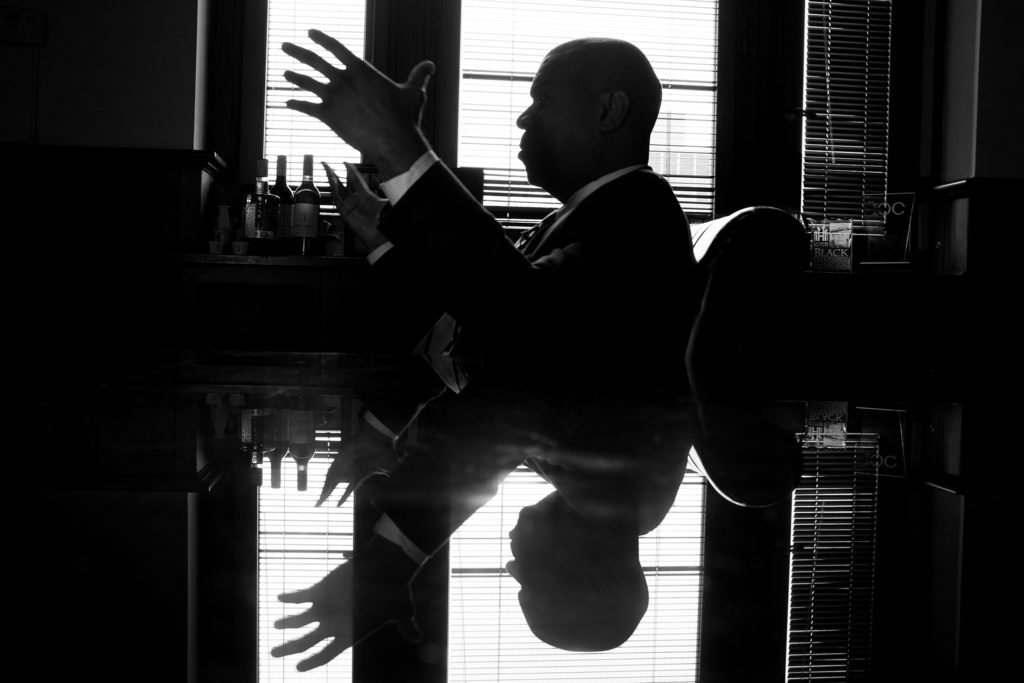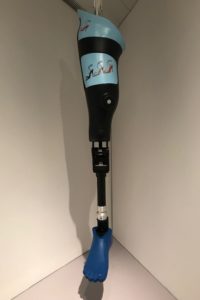Through the historical gates of Barnard College, under the shadow of Riverside Church, and down the stairs of the Milstein Center Library, Columbia University’s Oral History Master of Arts program held the second event in a series of oral history and story-telling workshops. Tim Raphael, co-founder and director of the Newest Americans oral history and story-telling project, presented about the origins and scope of the project. Despite being a talk geared towards historians and story-tellers, there stood out a few interesting connections to preservation and representation in archives and story-telling.
Raphael, a newly appointed Arts, Cultures, and Media Professor at Rutgers University, displayed his theater background with the ease in which he handled a few technical difficulties. Through video clips not cooperating, his laptop having died hours ago, and being emailed the wrong and out-of-order slide presentation, Raphael handled himself well and showed only a slight nervousness at speaking to Ivy League students and professors. Personally, I felt at ease upon overhearing several students discuss their confusion over an assignment, and one students’ phone going off mid-presentation. Ivy League-ers, they’re people too.
A few sharply worded digs at archivists early on brought to mind Michelle Caswell’s impassioned discussion of the “intellectual rift between archival studies scholarship and humanities scholarship” in her article for Reconstructionism (Caswell, 2016, p. 15). Speaking casually with Columbia’s director of OHMA, Amy Starecheski, Raphael uttered the phrases, I’m paraphrasing, “the archives as chambers of death,” and “archives are where no on who’s not an academic dare to tread.” As I wondered if this is what it feels like to be an information professional, to feel peeved when someone speaks down on archives, Raphael began his presentation.
Before introducing the main event, Dr. Starecheski started by acknowledging the land. She acknowledged that Columbia and Barnard sit on the stolen land of the unseated Lenape People, and that indigenous stories are rarely seen in archives. Inspired by the hyper-diverse community of the area, Newest Americans is a multimedia oral history and story-telling project at Rutgers University focused on telling the stories of immigrants and first generation Americans in and around Newark, New Jersey. It works through collaboration between film makers, photographers, artists, historians, journalists, faculty, and students.
It all started when a cardboard box of tapes from the 90s was found in the corner of a library, “and the librarian didn’t even know it was there” mused Raphael. These tapes were found to contain over 120 interviews with people who moved to Newark during the Great Migration between 1916 and 1970. Interviews with people of African heritage and descendents of slaves, the stories inspired Raphael to tell, what he calls, “local narratives with national and global implications.” The stories told are all examples of the preservation of cultural heritage, and the attempt to collect the stories of often ignored Americans. The goal of the format is to, as Raphael explained, “activate the archive” by creating engaging, entertaining, and informational short videos that new dimension to the american story.
Raphael showed one of the first projects produced by Newest Americans: an 8 and a half-minute documentary about current Newark mayor, Ras Baraka, his father, and his grandfather. The two voices heard in We Came and Stayed: Coyt Jones/Ras Baraka, are that of Baraka and his grandfather: Coyt Jones, who was the grandson of a slave and whose interview was one of the over 120 found in a box. Jones was asked over 14 pages of questions for an oral history project organized by the Krueger-Scott Cultural Center in the 90s.

This is a long quote but it perfectly summarizes the documentary: “In his interview, Coyt Jones reflects on his arrival in Newark [in 1927] and the city in which he raised his family. […] Ras Baraka sat down with Marcia Brown to share his own memories of growing up in Newark, and to answer some of the same questions posed to his grandfather twenty years ago. Together these interviews describe how the Great Migration transformed a family and a city (Newest Americans, 2015).” This is an entertaining way to preserve cultural heritage and I can envision a museum exhibit dedicated to the projects inspired by these tapes. In a way, this story is an example of Macdonald’s ‘difficult heritage.’ It is a way for people who lived through the civil rights era and were victims of injustice to further take ownership of their history and identity.
After We Came and Stayed, Newest Americans expanded into stories of people of many different backgrounds and U.S. cities, and recently began projects in Guatemala, Malta, and Lebanon. There was a tense moment towards the end of the question and answer part of the event when Raphael was asked about his role as a storyteller who is a white male and the inherent power imbalance. He appeared a bit shaken and shifted to the importance of story-telling and how much he loves the stories and that with the “access to all these amazing people” how could he not want to tell their stories. He finished his non-answer by stating, “if we only told our own stories, what a f—-ing boring world it would be.” Miriam Posner addressed this issue at the end of her keynote speech . She said, “it’s incumbent upon all of us […] to push for the inclusion of underrepresented communities […] (Posner, 2015). But, as Joan Shwartz noted towards the end of an introduction to two issues of Archival Science, and referencing Verne Harris, “It is important […] not to romanticize the marginalized, or feel elated for saving them from historical oblivion” (Schwartz, 2002, p. 17). There is a trend among archivists to collect previously unheard or underrepresented voices and stories, but inherent bias exists even if unintentional. For example, Indigenous Cataloging is the process for organizing information of indigenous people, but to have a separate phrase possibly further marginalizes the community. However, these stories need to be preserved and told as well, even if they are told by an outsider. It’s a difficult issue with a lot of ongoing discussion.
Representation and preservation in archives and oral history will continue to focus more on the underrepresented voice and I think the best thing to do is, like Dr. Starecheski, acknowledge that we are on stolen land and acknowledge the power imbalance of a white male producing a documentary about the those underrepresented voices. Newest Americans is an admirable example of activating archives to bring stories alive.
Heidi Klise
Sources:
- Caswell, Michelle. (2016). “The Archive’ is Not An Archives: Acknowledging the Intellectual Contributions of Archival Studies” Reconstruction 16(1). http://reconstruction.eserver.org/Issues/161/Caswell.shtml.
- Macdonald, Sharon. (2015). “Is ‘difficult heritage’ still difficult?” Museum International 67: 6–22
- Newest Americans. (Summer 2015). “We Came and Stayed: Coyt Jones/Ras Baraka.” Retrieved from http://newestamericans.com/wecameandstayed-baraka/#
- Posner, Miriam (2016). What’s next: The radical, unrealized potential of digial humanities. Keystone DH conference, University of Pennsylvania, July 22, 2015. http://miriamposner.com/blog/whats-next-the-radical-unrealized-potential-of-digitalhumanities/
- Schwartz, Joan M. & Terry Cook. (2002). “Archives, records, and power: the making of modern memory,” Archival Science 2: 1–19.


